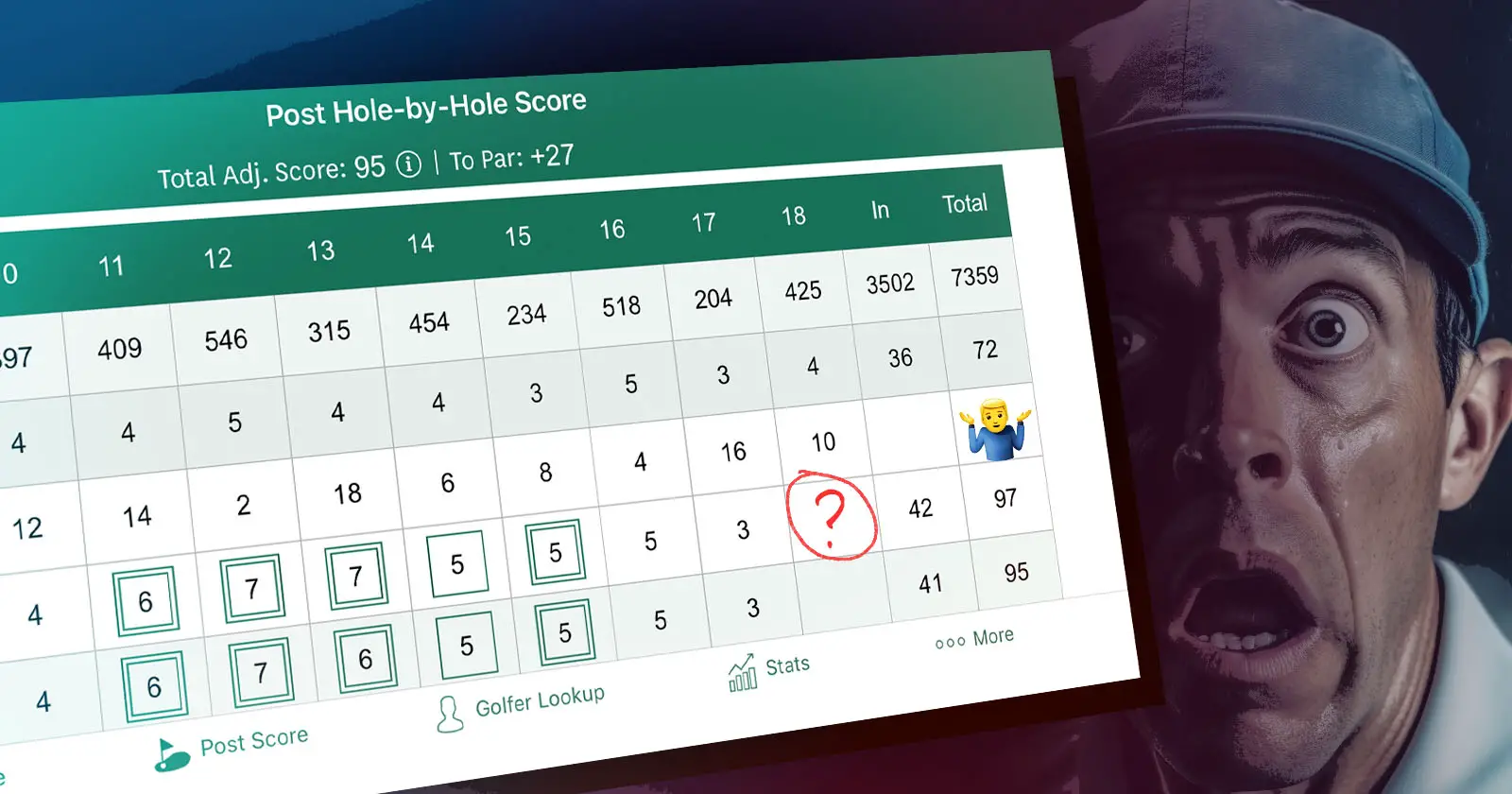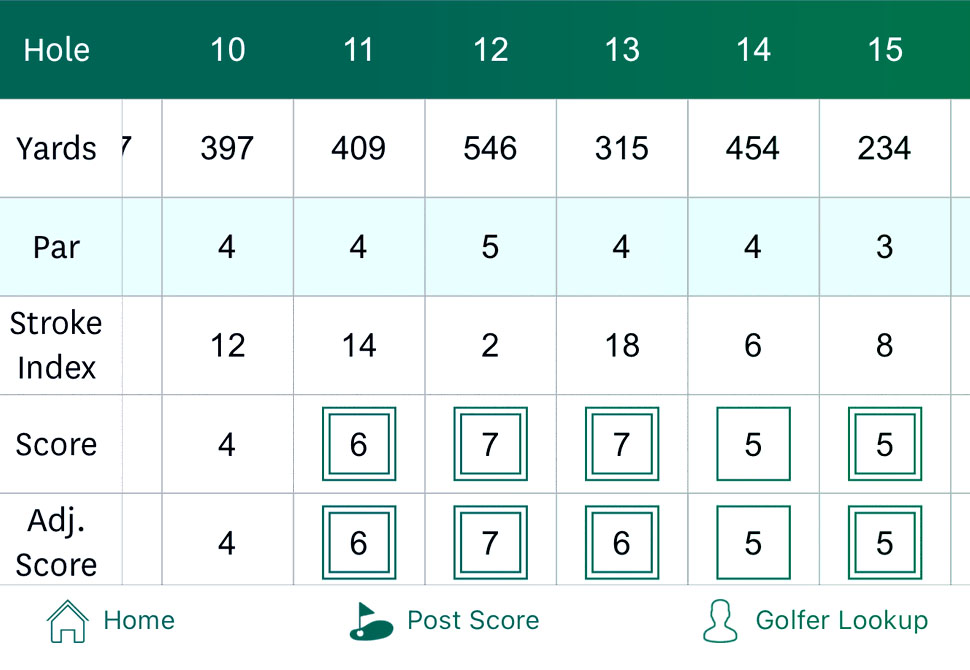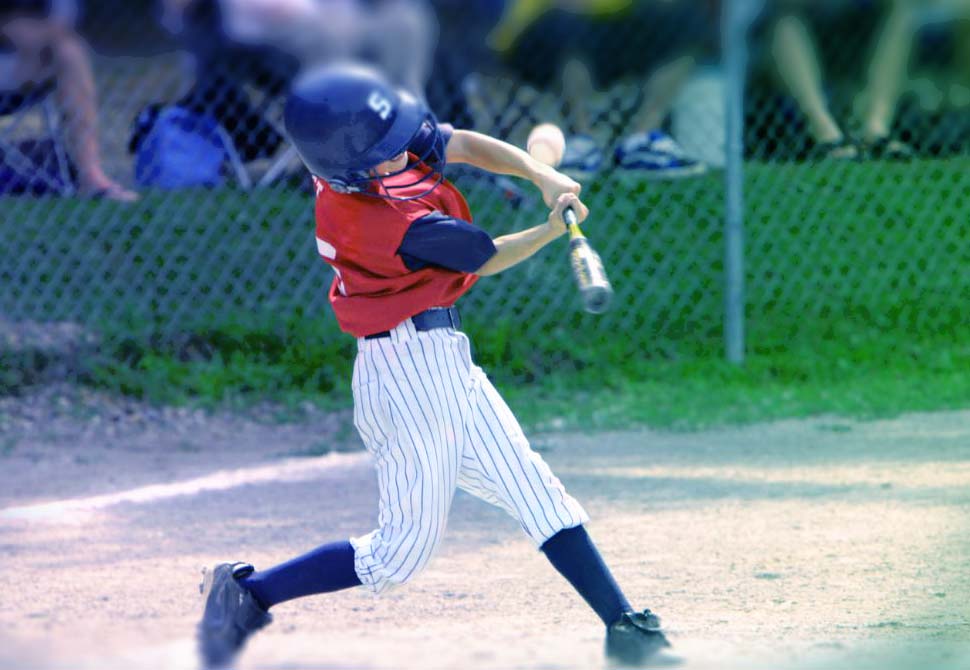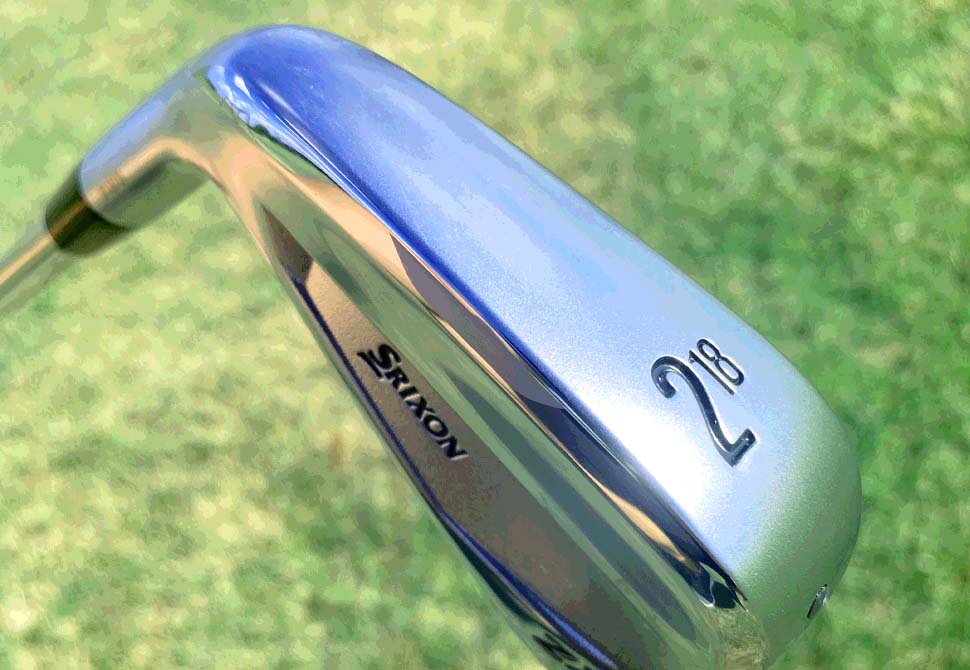Breaking 100 is a pretty big milestone for any person new to the game of golf.
The amount of golfers that actually do it may surprise you.
Let’s take a look at the numbers and see what percent of golfers break 100.

Percentage of golfers breaking 100
According to the National Golf Foundation, about 55% of all golfers break 100 regularly. Here’s a quick breakdown:
- Percentage of golfers that break 70: <1%
- Percentage of golfers that break 80: 5%
- Percentage of golfers that shoot between 80-89: 21%
- Percentage of golfers that shoot between 90-99: 29%
- Percentage of golfers that shoot between 100-110: 24%
- Percentage of golfers that shoot over 110: 21%
It’s good to understand that these statistics assume that golfers follow the rules. Many casual golfers relax about some aspects of the game and scoring(i.e. breakfast ball, using an OB as a hazard, picking up 4-footers, and so on) which may skew the results somewhat.
Understanding golf scores and handicaps
In the world of golf, scores and handicaps are the measuring sticks by which we gauge our progress and compare ourselves to other golfers. In this section, we’ll delve into the basics of golf scoring and handicaps, as well as the United States Golf Association (USGA) handicap system.
United States Golf Association Handicap System
The USGA handicap system is a standardized method for golfers of varying skill levels to compete fairly on the course. Through this system, each golfer is assigned a handicap index based on their performance in previous rounds.

The handicap index adjusts for differences in course difficulty, allowing golfers to compare their scores and abilities more accurately.
A golfer’s handicap index is an essential component of the USGA system. It represents a golfer’s potential ability on the course, defined as the best 10 of their last 20 rounds, adjusted for course rating and slope. A lower handicap index indicates a more skilled golfer.
The handicap index is often used to determine which players are considered “better players,” those who can frequently break par or consistently score below 85-90.
The course rating represents the difficulty level of a golf course for a scratch golfer, a player with a handicap index of 0. The slope measures the difficulty for a bogey golfer, with a handicap index of around 20, relative to the course rating. Both of these factors influence how a golfer’s handicap index is calculated.
Is shooting 100 considered a good golf score?
When it comes to figuring out what a [good] golf score may be depends on the skill level and experience of the golfer.
Given that half of all golfers consistently break 100—I’d say it’s definitely a good score.

Breaking 100: Statistics and factors
Men vs. Women Golfers
When looking at men and women golfers, it’s important to note the different skill levels and handicaps.
According to the United States Golf Association (USGA), the average handicap for men is 14.2, while for women, it’s 26.5.
To be honest, if you shot 98 and feel good about it, there is your answer right there. It’s all about the expectations we put on ourselves.
For novice golfers, consistently breaking 100 is very meaningful to his/her journey to improve their skills. Achieving this shows that they possess a basic understanding of swing mechanics, course management, and the ability to minimize major mistakes.
In contrast, a much more experienced golfer may be striving to break 80 or even 70, as their skill set and experience level are much higher.
Shooting 100 is a respectable golf score, especially if you have only been playing golf for several months now.
How many putts per round to break 100?
According to GolfLink,
“If your goal is to break 100, your putting doesn’t need to be flashy, it just needs to be a great game manager. By improving your technique, making short putts under pressure, getting your long putts close to the hole, and limiting three-putts to four or less per round, you’ll be well on your way”.

In a weird way, what this means, is don’t try and make every putt from outside 15-20 feet.
Focus on speed to where your miss is within 2-3 feet to minimize three-putting with an emphasis on leaving yourself uphill putts as much as possible.
Golf practice routine to break 100
While it’s always more important to practice your short game, if we zoom out a bit and solely focus on the goal of breaking 100 we need to shift most of the focus to hitting it straighter off the tee.
When you hit the driving range, start with a quick 5 minute wedge warmup and then go ahead and jump to your 3-wood or hybrid club(s).
Then after hitting, say 20-25 of those, whip out the driver and picture yourself on the tee and what type of drive it would take to be in the fairway.
If you don’t have a full set of clubs, try practicing your golf swing with a 7-iron so you can get a feel for a middle-length shafted club.
Does equipment matter when trying to break 100?
According to GolfWRX,
“equipment can certainly help, but it’s not the most important factor when trying to break 100. Instead, focus on improving your swing, course management, and short game skills”.
While having properly fit clubs that suit your swing can certainly help, it is not the most important factor in breaking 100. Taking beginner golf lessons is a much better starting point for the average golfer wanting to break 100.
How long does it take to break 100
This definitely falls under the category of “it depends.”
A beginner golfer with a background in athletics (i.e. baseball or hockey) will more than likely pick up on the game of golf months and months less than a beginner golfer that has not played sports in the past.

For most golfers, it could take 2-3 years to break 100.
There’s just certain athleticism involved to consistently strike a golf ball the way it needs to be hit to shooting lower scores.
What is a good workout routine to break 100?
If you only hit the gym once a week, try and make 60-70% of your workout geared towards strengthening your core and glutes.
This is where most of the power is generated to crushing golf balls (aka 💣).
If you are able to hit the gym more than once a week, working in a lot of legs is also important for generating force when hitting the ball.
Golf equipment needed to break 100
You don’t need to run out and spend $3,000 on a set of clubs just to break 100.
If you have a decent set of sticks then just play what you have and reward yourself with some newer clubs when you start consistently breaking 100.

What statistics matter most when breaking 100
We did a big rundown on statistics most valuable to shoooting lower scores for beginners.
Check it out and use the stats as benchmarks for your game in your journey to breaking 100.
What percent of golfers break 90
If you have already conquered the beast of breaking 100, then you probably have your sights well set on breaking 90.
Approximately 25 percent of adult golfers can break 90.
Breaking 90 in golf means shooting a score of 89 or less on an 18-hole course. To do this, a golfer needs to maintain an average of less than five strokes per hole consistently.
The key area of focus should mostly be keeping the ball in play off the tee, juxtaposed with practicing more of your short game.
Yes, the short game is still the most important aspect of an average golfer becoming a good golfer and a good golfer becoming a scratch golfer.
However, nothing screams triple bogey more than routinely not putting the ball in play off the tee.
What percent of golfers break 80
From the data we have gathered, it appears that a relatively small percentage of golfers can break 80.
According to the USGA, approximately 2-5% of golfers consistently break 80.
Breaking 80 in golf means shooting a score of 79 or less on an 18-hole course.
One interesting note from the people over at My Golf Spy is that around 10% of golfers who track their handicap can break 80 regularly.
This emphasizes the importance of knowing your handicap, tracking progress, and setting goals for yourself.
If you are consistently breaking 90, this means that you are more than likely keeping it in play off the tee and now should start focusing more on short irons and short game.
Once we are 150 yards and in, we’ve reached “scoring clubs” territory.
According to a Golf Digest, amateurs hit their approach shots to an average of 25 to 30 yards short of the green. This suggests that the majority of average golfers miss the green from 150 yards and in, but practicing your short irons and wedges more means you will begin to hit more greens and drop those scores closer to 80 and below.
What percent of golfers break 70
Approximately 0.92% of golfers CONSISTENTLY break 70.
Golfers who can consistently break 70 are usually those with a handicap of +1 or better. A golfer with a +1 handicap typically needs to break par quite frequently to maintain or improve his/her handicap.
To break 70, we really have to be clicking on all cylinders.
Gotta be hitting fairways, at least half the greens in regulation, and basically getting it up and down half the time while obviously having to sprinkle in 3-4 birdies at least.
Does it take long to get GOOD at golf?
If your definition of “good” is breaking 100 then it could take as little as a handful of months to start.
It will most certainly take longer to get good at golf for less experienced golfers with a non-athletic background.
Let’s wrap it up
As you can see, trying to break 100 is very attainable for most average golfers if he/she really focuses on hitting fairways first and foremost.
If you keep track of your handicap, measure your statistics and play at least 1-2 times a week you are well on your way to breaking 100 (and more).
Follow us on Twitter at https://twitter.com/wolfitgolf and let me know how WHEN you break 100 for the first time so I can give you a digital high five.
